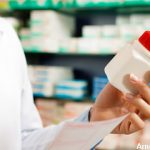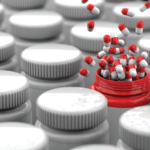Pharmaceutical manufacturers are incentivized to file for patents because they substantially extend the exclusivity period. From the time the patent is granted, the company has exclusive rights to the NCE for 20 years. That said, drug development may take up to 15 years, so by the time the drug comes to market, the patent may be close to expiring. In the pharmaceutical industry, this expiration of patent protection is referred to as falling off the patent cliff.
To prevent their drugs from falling off that cliff, companies often seek to extend the exclusivity period for a drug by filing secondary patents in a process called evergreening.9
Evergreening involves making small changes to branded drugs that may not confer a therapeutic benefit. Such changes may include route of administration, dosage—even the color of the pill. Other changes may involve the production and manufacturing process or finding new indications for old drugs. All of these can serve as justification for a secondary patent to extend the patent protection for a drug, rendering it evergreen.
Some companies have looked for more creative ways to preserve their patents. A patent thicket is created by obtaining multiple patents that cover different aspects of the technology needed to manufacture a drug, all of which would need to be challenged by a potential competitor.10 Another approach was developed by Allergan, which transferred all patents for its eye drug, Restasis, to the St. Regis Mohawk Tribe because it holds sovereign immunity against intellectual property lawsuits.
The U.S. Supreme Court eventually closed this loophole. In fact, the court system would likely invalidate many of the improvidentially granted patents and other end runs used by companies to preserve exclusivity. The problem, of course, is that taking a company to court over a patent takes time and money that many generic and biosimilar manufacturers don’t have. For many competitors, a thick patent thicket provides a powerful disincentive against challenging a blockbuster drug.
The results of these strategies are exactly what you would expect:11
- Over 70% of the 100 best-selling drugs between 2005 and 2015 had their protection extended at least once and almost 50% received more than one exclusivity extension;
- The 12 best-selling drugs in the U.S. in 2017 had an average of 125 patent applications, providing them with an average of 38 years of exclusivity, which is almost twice the 20-year original patent protection;
- Humira was approved by the FDA in 2003. Thanks to 247 patent filings, AbbVie has exclusive rights to market adalimumab until 2034, although it has brokered deals with individual companies to bring biosimilar agents to market in 2023. The price of Humira increased by 18% every year between 2012 and 2016;
- Revlimid was approved by the FDA in 2005. It has a patent thicket of 96 patents that potentially provide 40 years of competition-free profit; and
- Lantus was approved by the FDA in 2000. A patent thicket of 49 patents may prevent a generic form of Lantus from entering the market for 37 years.
Who suffers as a result of evergreening? We do. One year after a generic drug enters the market, the price of the drug drops by more than 60% on average. Substituting biosimilars for bio-originators could save the U.S. healthcare system up to $124.5 billion between 2021 and 2025, if they were allowed to come to market.12 The manipulative use of patents contributes substantially to total healthcare costs.

